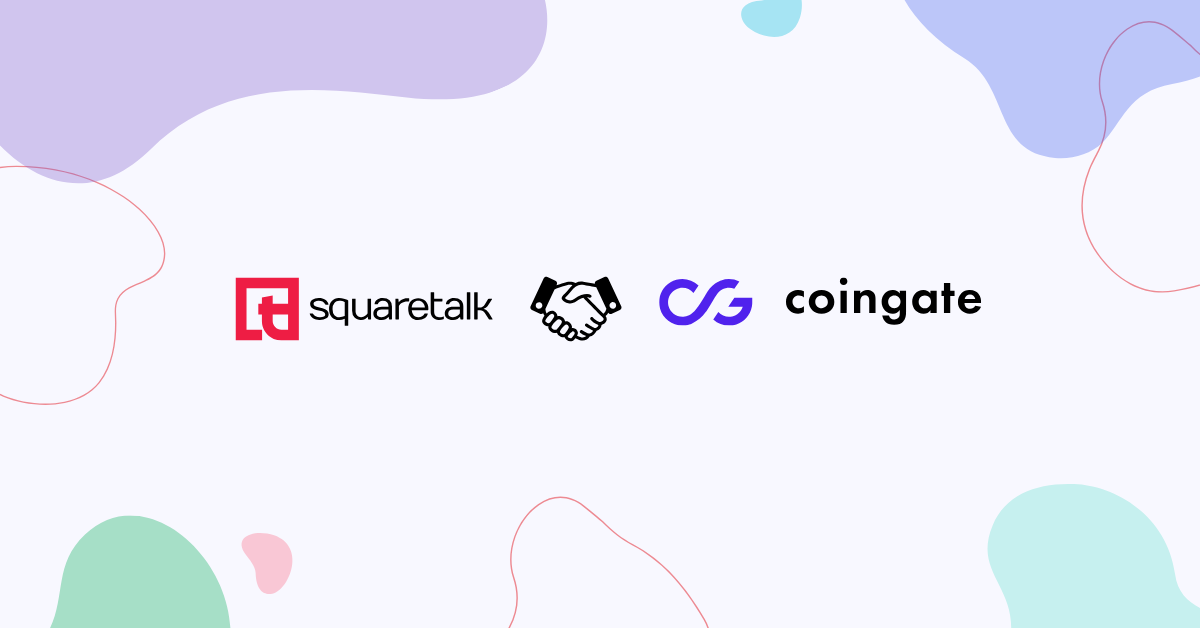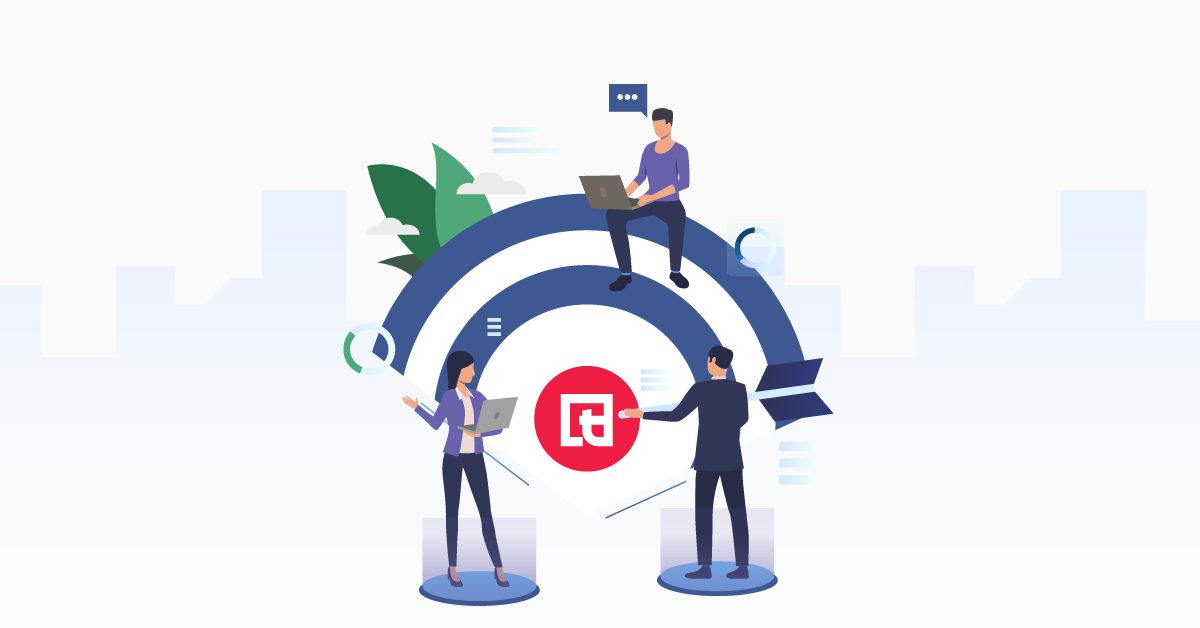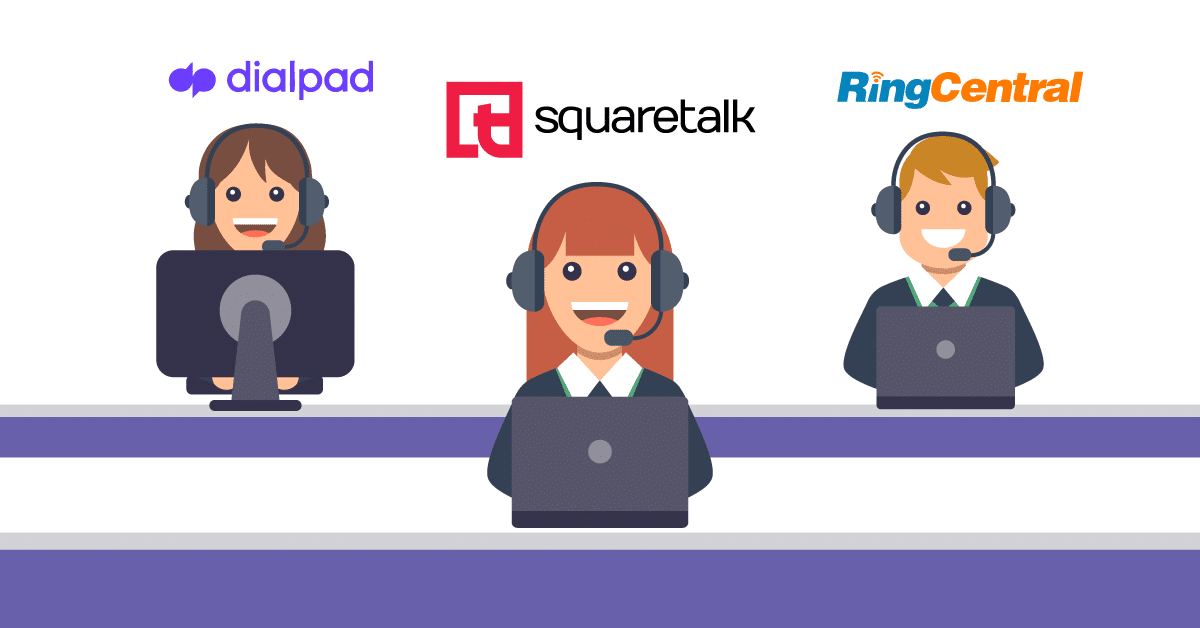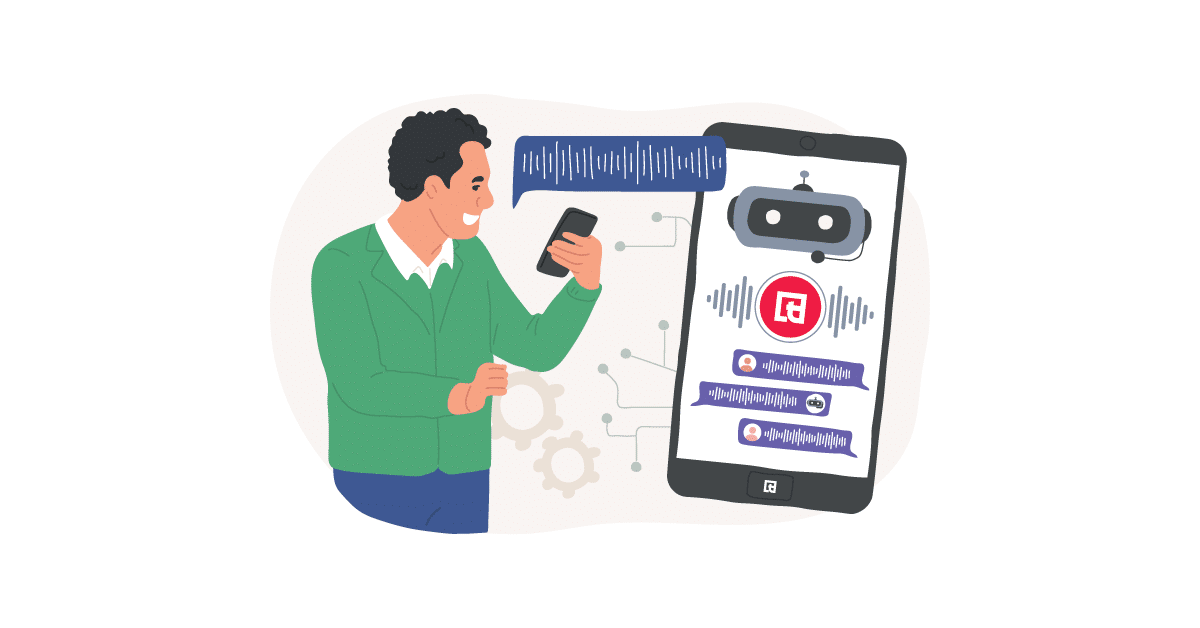From cold-calling to customer support delivery, the voice channel keeps playing a strategic role in finding leads. Nonetheless, outdated systems such as manual dialing, basic touch-tone phones without caller ID and paper-based call lists will most likely fall short of addressing your current needs. Not to even mention how much they could be keeping you trailing behind the competition.
This is where a predictive dialer comes into the picture.
What is a Predictive Dialer?
A predictive dialer is an advanced dialing system that uses algorithms to ring multiple numbers simultaneously and estimate when an agent will be available. The goal is to connect an agent with a new call as soon as they finish the current one.
The system calculates the best time to dial based on average call duration, the availability of your staff and other metrics like call connection rate, campaign settings, agent skills etc.
Traditional predictive dialers can operate over various telecommunication networks. Based on how the calls are placed and routed, they can use Public Switched Telephone Network (PSTN), Voice over Internet Protocol (VoIP), Session Initiation Protocol (SIP) Trunking, Integrated Services Digital Network (ISDN) or other networks.
According to statistics, the predictive dialing business is expected to grow at an annual rate of 38% between 2021 and 2028.
What Is a Predictive Dialer Best For?
Specifically designed for outbound call centers, predictive dialers are perfect for operations with high call volumes that heavily rely on optimal agent time management.
This dialing system can also adjust the calling pace in real time based on the number of available agents, average call handling time and historical call outcome data. This helps balance efficiency with agent and customer experience.
Who Is a Predictive Dialer Best For?
Predictive dialing is crucial for high-velocity sales teams, fundraising campaigns and proactive customer services. Other typical examples are traders, telemarketers, debt collectors, insurance agents, financial advisors, etc.
All auto-dialer use cases can also benefit from the more sophisticated settings and expanded capabilities of a predictive dialer. This includes all kinds of appointment reminders, service notifications, simpler marketing messages and surveys and customer service follow-ups.
What Are Predictive Dialer's Benefits?
There are many advantages of integrating this dialing technology into your business. Here as some of the biggest:
Increased Talk Time and Efficiency
Prolonged pauses in between calls can quickly add up and ultimately hurt a company’s ROI and reputation. By distributing the workflow equally among all agents and adjusting the dialing pace, predictive dialing can cut the unproductive time on unanswered calls and busy signals down to a minimum.
Lower Operational Costs and Higher Campaign ROI
Optimizing your outbound marketing strategy will result in financial savings. Besides lower installation and maintenance fees, predictive dialing systems come with added benefits. For example, increasing agility by limiting the interval between calls means fewer agents are needed to do the job – which in turn drives costs down whilst also growing your potential for sales conversion.
Advanced Call Monitoring
The predictive dialing system allows supervisors to smoothly monitor agents for performance evaluation and training and schedule periodic reports. Keeping an eye on customer interaction will ensure a positive experience for your prospective clients and boost their chances for a successful customer journey.
Effective Integration
Adopting new solutions can sometimes be complicated as some systems require the erasure of all pre-existing infrastructure and are not compatible with all devices. Predictive dialing, on the other hand, allows for the integration of a variety of CRM tools. This will in turn allow for increased control, visibility and personalization.
Improved Connection Rates
Predictive dialers boost connection rates by leveraging advanced algorithms and data analytics. They determine the best times to reach out to leads or customers, increasing the likelihood that calls will be answered. The system also compensates for unanswered calls, busy signals and voicemails. It can prioritize leads based on the likelihood of conversion or the importance of the call and mimic local area codes on the recipient’s caller ID increasing the chances of them picking up.
What Are Predictive Dialer's Drawbacks?
- The risk of dropped calls if agents are not available is bigger.
- Overly aggressive dialing strategies can lead to negative customer experiences.
- Requires careful management to comply with regulations.
- Without sufficient breaks or variation in tasks can lead to agent burnout.
Predictive Dialer Compered to Other Dialing Systems
There is no one universally better type of dialing system. The choice depends solely on your business needs and operation flows.
For example, if you need more efficient use of agent time, a predictive dialer is better than both auto and power dialers.
In terms of call abandonment rates, though, progressive dialers offer a more balanced dialing strategy than predictive systems, which reduces potential customer frustration.
Automated predictive dialers include additional automation features for integration, follow-ups and scheduling, making them more sophisticated than standard predictive dialers.
Adding artificial intelligence helps AI predictive dialers to be a more dynamic and personalized solution than typical predictive dialers.
What to Look for in a Predictive Dialer?
- Robust Integration Capabilities
- Compliance with TCPA, GDPR, DNC Lists, Time-Zone Restrictions, etc.
- Easy Scalability
- Campaign-Level Customization and Flexibility
- Real-Time Analytics and Reporting
- Ease of Use for Agents and Managers
- Quality Assurance Tools Like Call Recording, Listen, Whisper and Barge
- Level of Customer Support
- Pricing Model and Cost Structure
- Trial Periods and Demos
Mistakes When Choosing a Predictive Dialer
- 1. Not ensuring that the predictive dialer integrates seamlessly with your existing CRM, business systems and tech stack can lead to significant operational and workflow disruptions and skyrocket your costs.
- 2. Underestimating the need for compliance features can expose your business to legal risks and financial penalties, especially in regions with strict regulations like telemarketing and healthcare.
- 3. Choosing a predictive dialer that can't accommodate increased call volumes and additional agents without requiring a complete system overhaul will cost you time and money in the future.
- 4. Opting for a system with a steep learning curve or complex interface can hinder its adoption and reduce overall productivity.
- 5. Unreliable customer support and technical assistance can leave your team stranded in the most moments.
- 6. Focusing solely on the cost of a predictive dialer can make you miss optimization opportunities or result in a higher total price for adding the features you need.
- 7. Skipping trial periods or demos to test the system's capabilities can result in conflicting expectations and reality.
- 8. Without comprehensive reporting, you'll miss out on quality performance monitoring, data-driven decisions and the ability to optimize campaigns on the fly.
- 9. Not involving agents in the selection process or ignoring their feedbackt can cause resistance, morale reduction and decreased efficiency.
- 10. Assuming that all vendors offer the same features and capabilities can lead to choosing a predictive dialer that does not align with your specific needs.
Final Words
Predictive dialers are a powerful tool for enhancing outbound communication. Their ability to automate dialing based on real-time data and predictive analytics can transform the efficiency of your call center operations.
However, success with this technology requires a nuanced understanding of its capabilities, a clear-eyed assessment of your organizational needs and a vigilant approach to the selection and implementation.
If you navigate this wisely, you can successfully leverage predictive dialers to drive productivity and deliver exceptional customer experiences.
FAQ
What is a predictive dialer?
This is an automated telephone dialing system that uses algorithms to dial phone numbers in advance of agents being available. It aims to minimize idle time and maximize the efficiency of call center operations by predicting when agents will finish current calls and be ready for the next interaction.
How does a predictive dialer work?
It analyzes call statistics such as average call duration, answer rates and agent availability to intelligently place calls. The system dials multiple numbers simultaneously, connecting agents to live calls as soon as they become available, while automatically filtering out unanswered calls, busy signals and voicemails.
What are the key benefits of using a predictive dialer?
They include increased agent productivity, improved operational efficiency, enhanced customer reach within shorter periods and the ability to manage large volumes of calls. Predictive dialers also offer detailed reporting and analytics.
Are there any drawbacks to using predictive dialers?
Downsides include the potential for higher call abandonment rates if the system overestimates agent availability, possible customer annoyance due to brief delays in agent connection and the need to ensure compliance with regulations.
How does a predictive dialer differ from other dialing systems?
Unlike auto dialers that dial numbers sequentially, predictive dialers use algorithms to dial multiple numbers based on predicted agent availability. This contrasts with power and progressive dialers, which dial numbers more conservatively and are less likely to generate call abandonment. While traditional predictive dialers offer efficiency improvements based on historical data, AI predictive dialers provide a more nuanced, data-driven and capable of real-time learning and adjustment.
What industries benefit most from predictive dialers?
Industries with high-volume call operations, like telemarketing, debt collection, customer service and political campaigns.
How do predictive dialers ensure compliance with telemarketing laws?
Most predictive dialers have compliance management features, such as time zone management, do-not-call list integration, call abandonment rate settings and consent-based calling.
Can predictive dialers integrate with CRM systems?
Yes, many systems offer CRM integration. This gives agents access to customer information in real-time, personalizes interactions and automatically logs call details.
What should you consider when choosing a predictive dialer?
Consider the dialer’s integration capabilities with your existing tech stack, compliance management features, scalability, analytics and reporting tools, user-friendliness for agents and the level of vendor support and training provided.
What are common mistakes to avoid when implementing a predictive dialer?
Don’t underestimate the importance of CRM integration, agent training, compliance features, adjusting dialing settings to optimize call ratios and utilizing the analytics features to improve operations.






